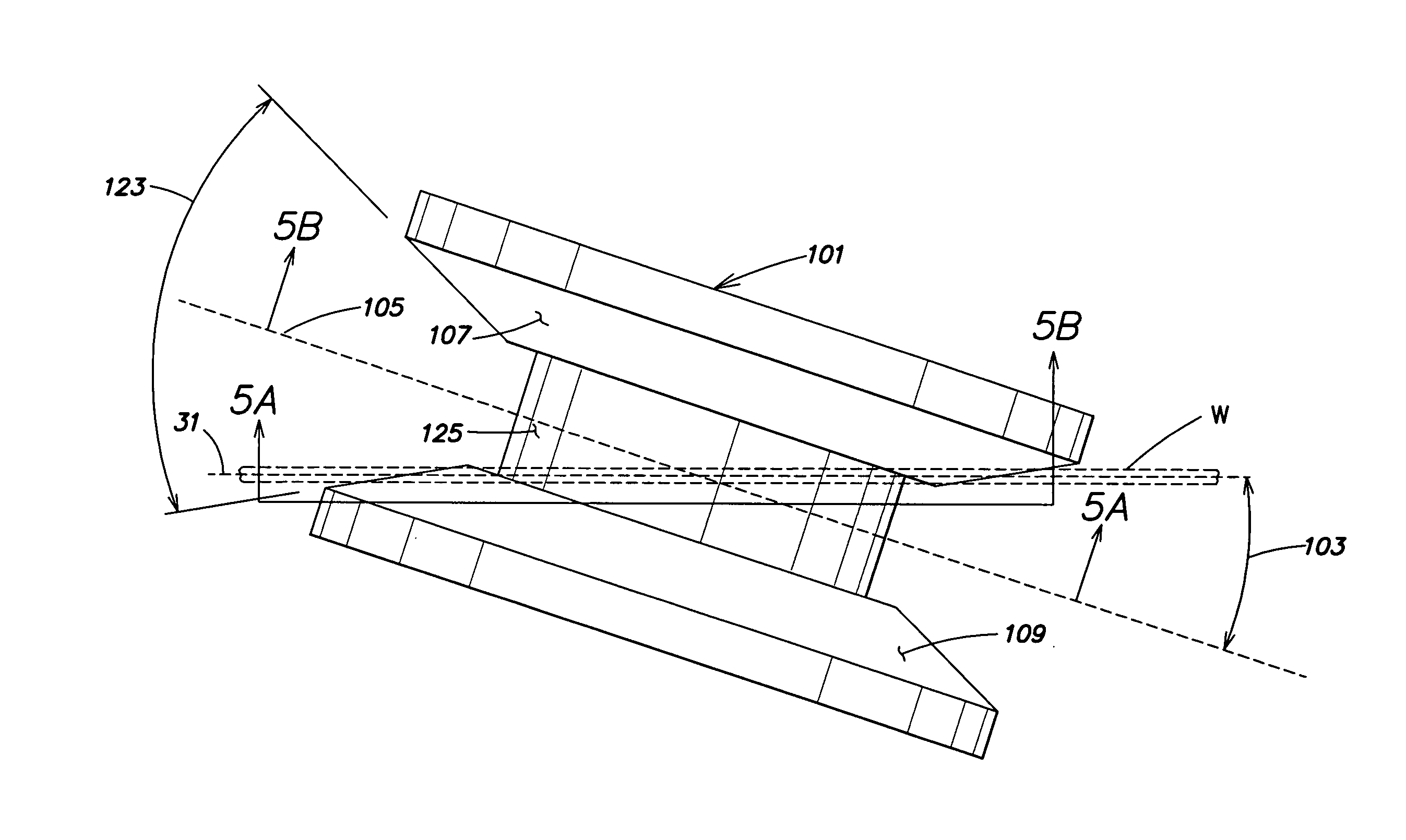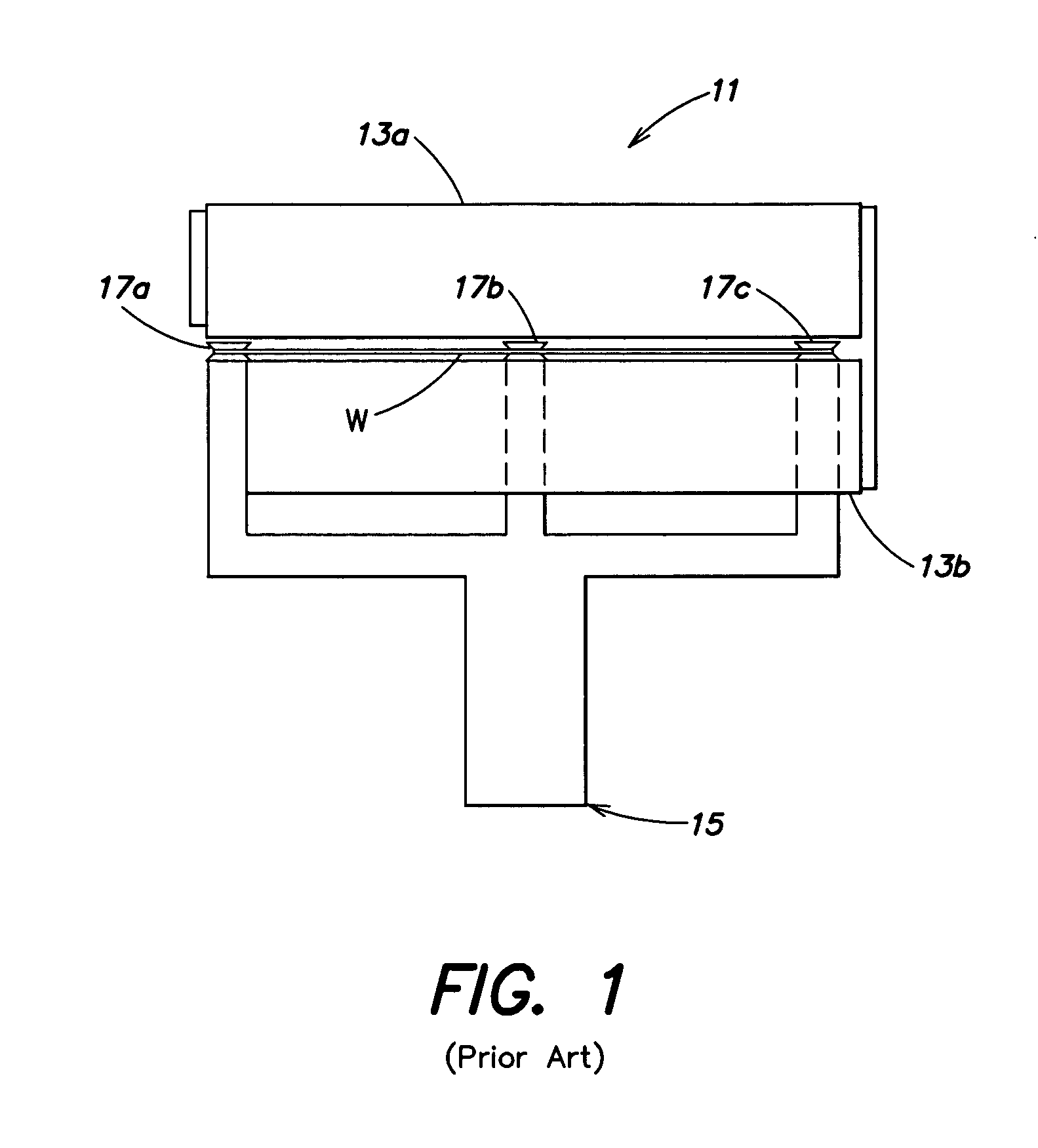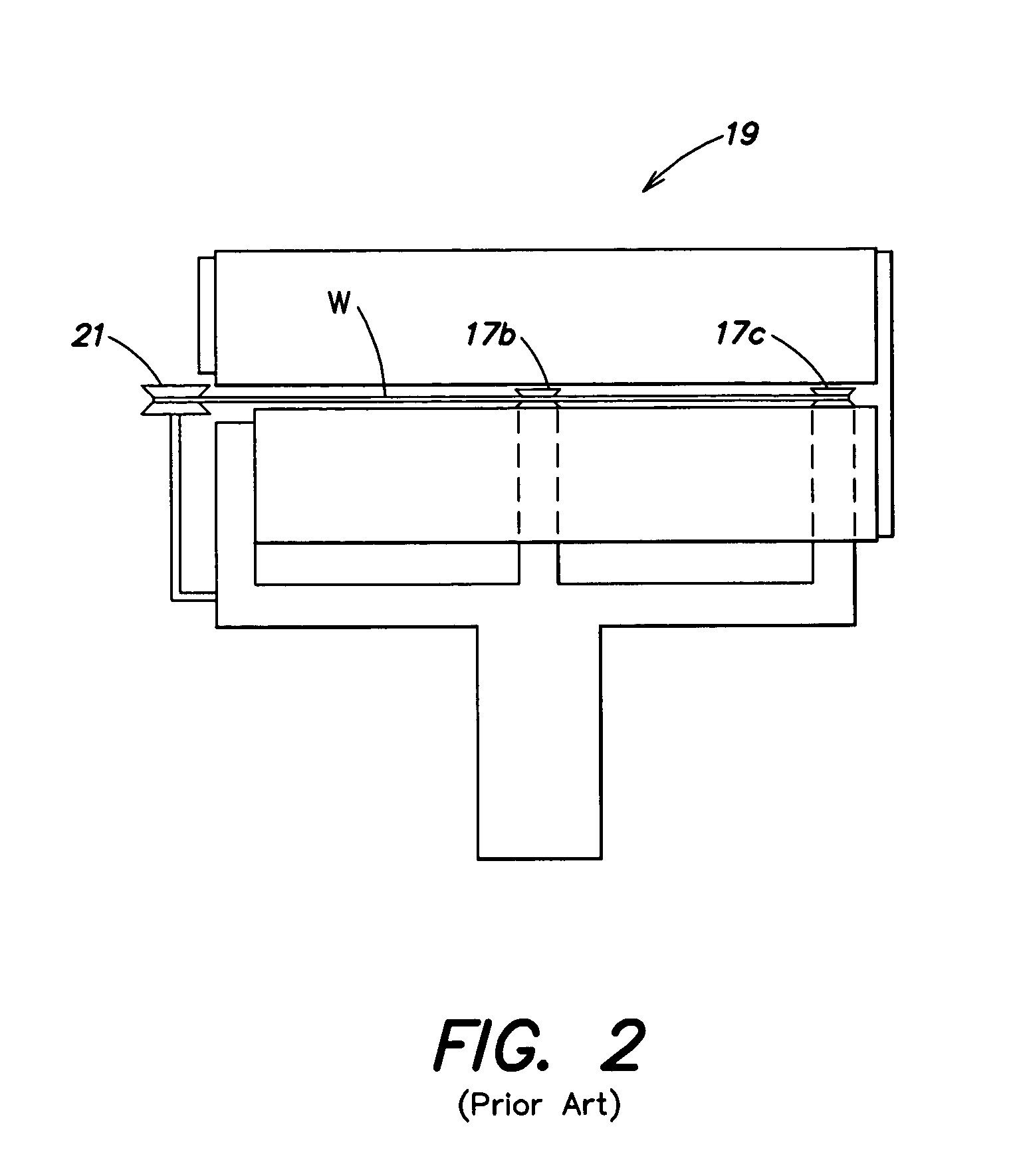Wafer edge cleaning
a technology of cleaning edge and blade, applied in the field of cleaning thin disks, can solve the problems of slurry particles still remaining, causing defects during subsequent processing, and slurry induced defects still occurring, and subject to rapid wear and tear
- Summary
- Abstract
- Description
- Claims
- Application Information
AI Technical Summary
Benefits of technology
Problems solved by technology
Method used
Image
Examples
Embodiment Construction
Edge Cleaning Roller
[0034]FIG. 4 is an side elevational view of an inventive edge-cleaning roller 101 in which the wafer W is shown in phantom across the edge-cleaning roller 101, the edge-cleaning roller 101 being adapted to contact edge surfaces (e.g., edge bevels as described above with reference to FIG. 3A) of the wafer W for cleaning. Where, as described above, the wafer W is supported and driven so as to rotate and remain within the nominal rotation plane 31 of the wafer W (rotation and support means for the same not being shown), the edge-cleaning roller 101 may be inventively oriented relative to the wafer W so as to form a first angle 103, the first angle 103 being that angle which is described between the nominal rotation plane 31 of the wafer W and a rotation plane 105 within which the edge-cleaning roller 101 is disposed and is adapted to rotate.
[0035] As shown in FIG. 4, the rotation plane 105 of the edge-cleaning roller 101 may be oriented relative to the nominal rot...
PUM
 Login to View More
Login to View More Abstract
Description
Claims
Application Information
 Login to View More
Login to View More - R&D
- Intellectual Property
- Life Sciences
- Materials
- Tech Scout
- Unparalleled Data Quality
- Higher Quality Content
- 60% Fewer Hallucinations
Browse by: Latest US Patents, China's latest patents, Technical Efficacy Thesaurus, Application Domain, Technology Topic, Popular Technical Reports.
© 2025 PatSnap. All rights reserved.Legal|Privacy policy|Modern Slavery Act Transparency Statement|Sitemap|About US| Contact US: help@patsnap.com



